Abstract
Daphnia pulex de Geer and Daphnia magna Straus populations cannot be maintained in defined (sensu stricto) media containing less than 0.1 part per billion (ppb) of selenium. A concentration of 1 ppb is sufficient to satisfy minimal needs in otherwise sufficient media. In the first generation with no selenium added to the medium or detected in it, media deficiency is shown by a premature cuticle deterioration visually similar to senescence, by progressive loss of distal segments of second antennae (primary swimming appendages), and by a shortened lifespan. No progeny attain reproductive maturity in the second generation. Although experimental animals in prime condition exhibit a shortened lifespan in the first generation maintained at 0.5 ppb selenium, culture lines can be maintained at 0.5 ppb for indefinite numbers of generations if established as young orthoclones . Tests in organic-rich media indicate a significant sparing effect of organic additions. This selenium requirement is reminiscent of that for the stability of feathers in domestic fowl.
Full text
PDF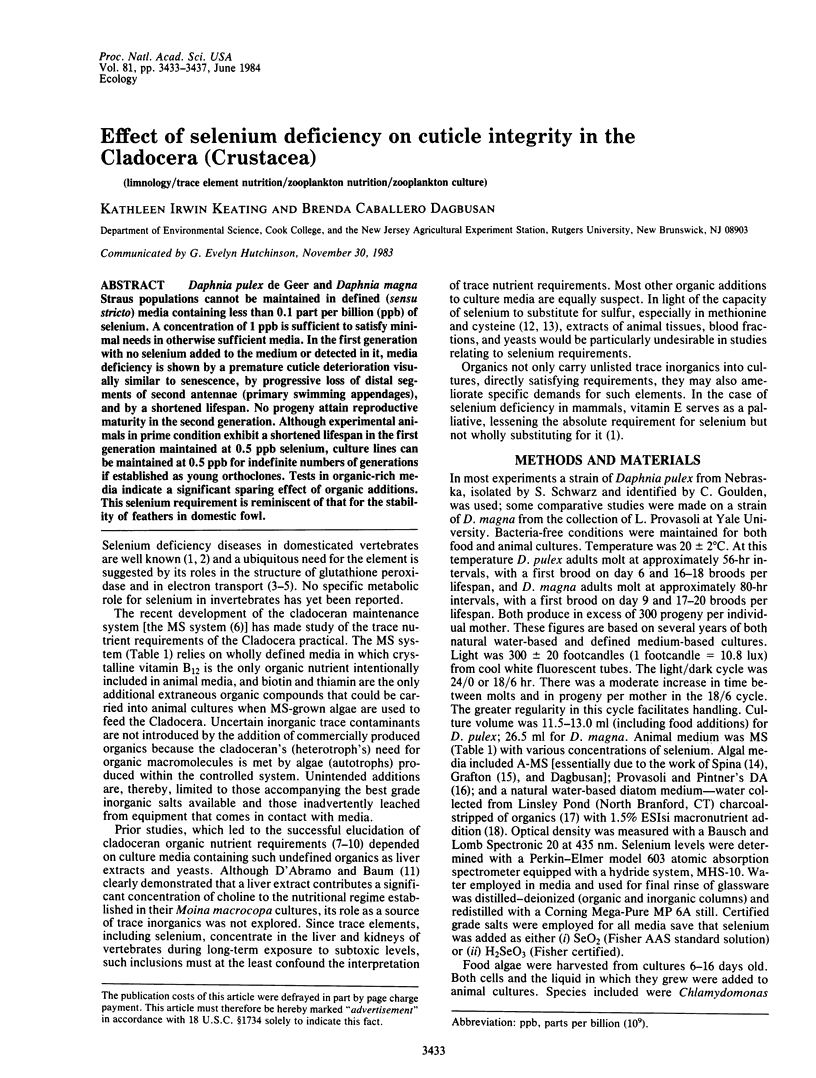
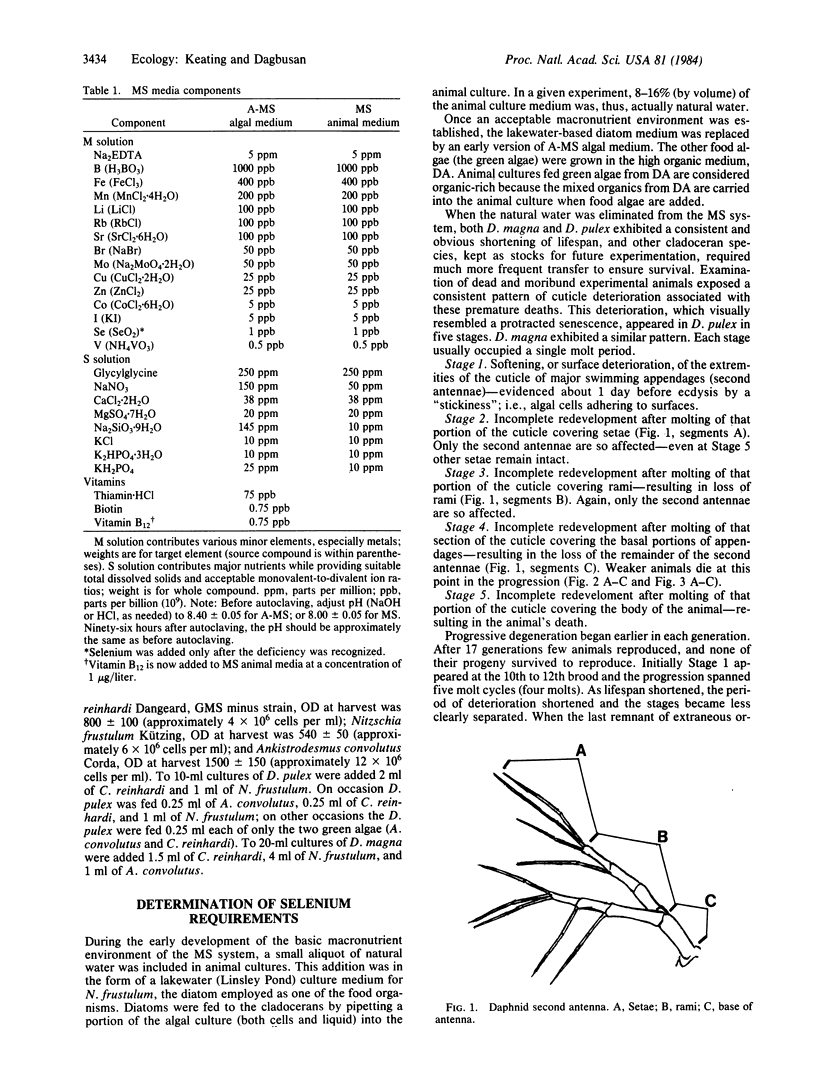
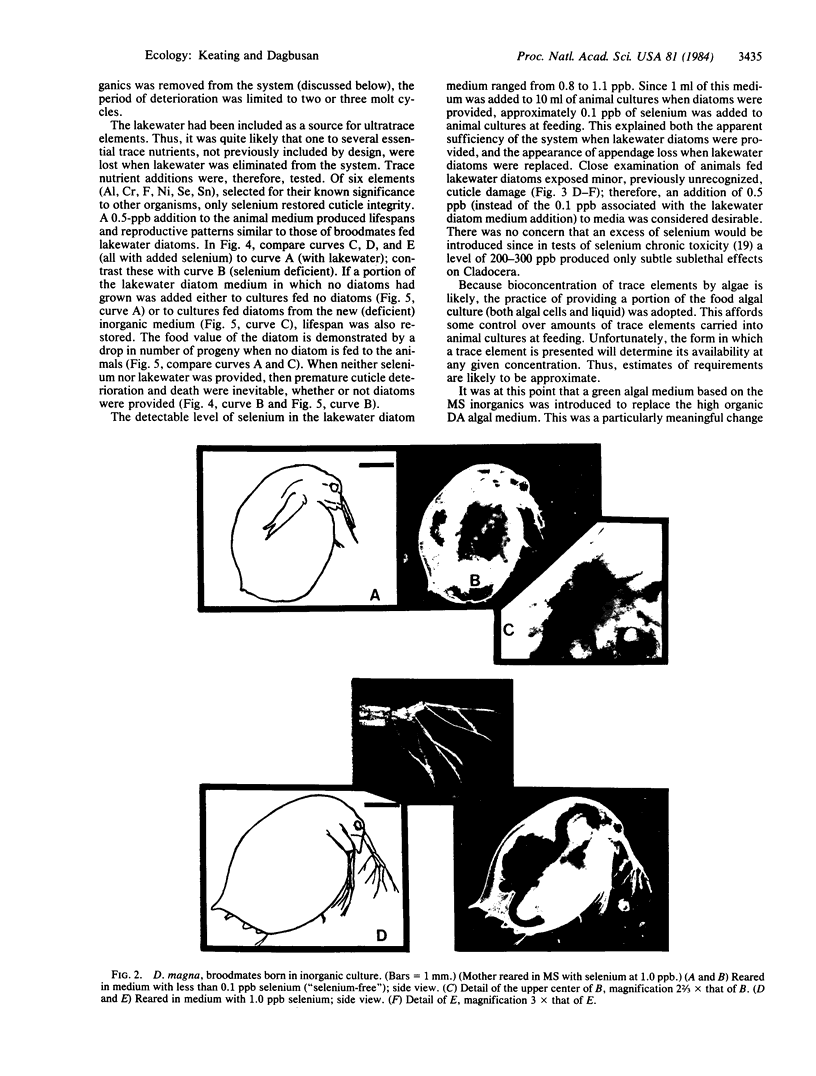
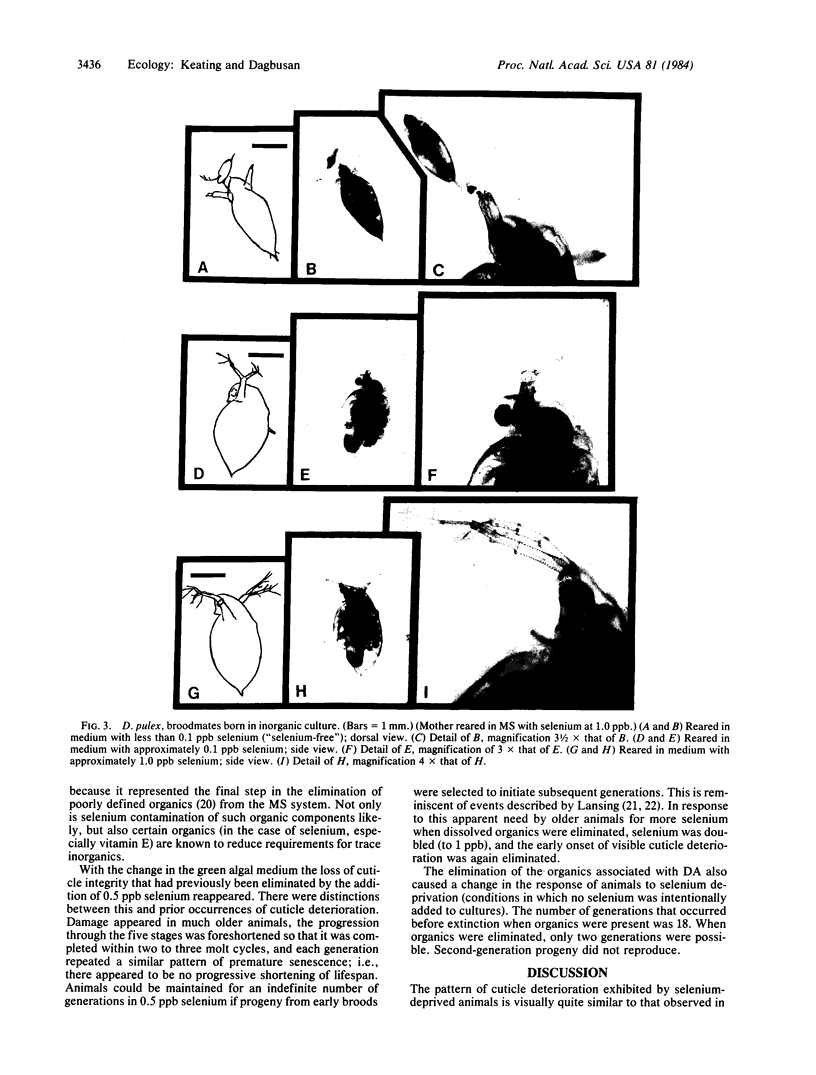
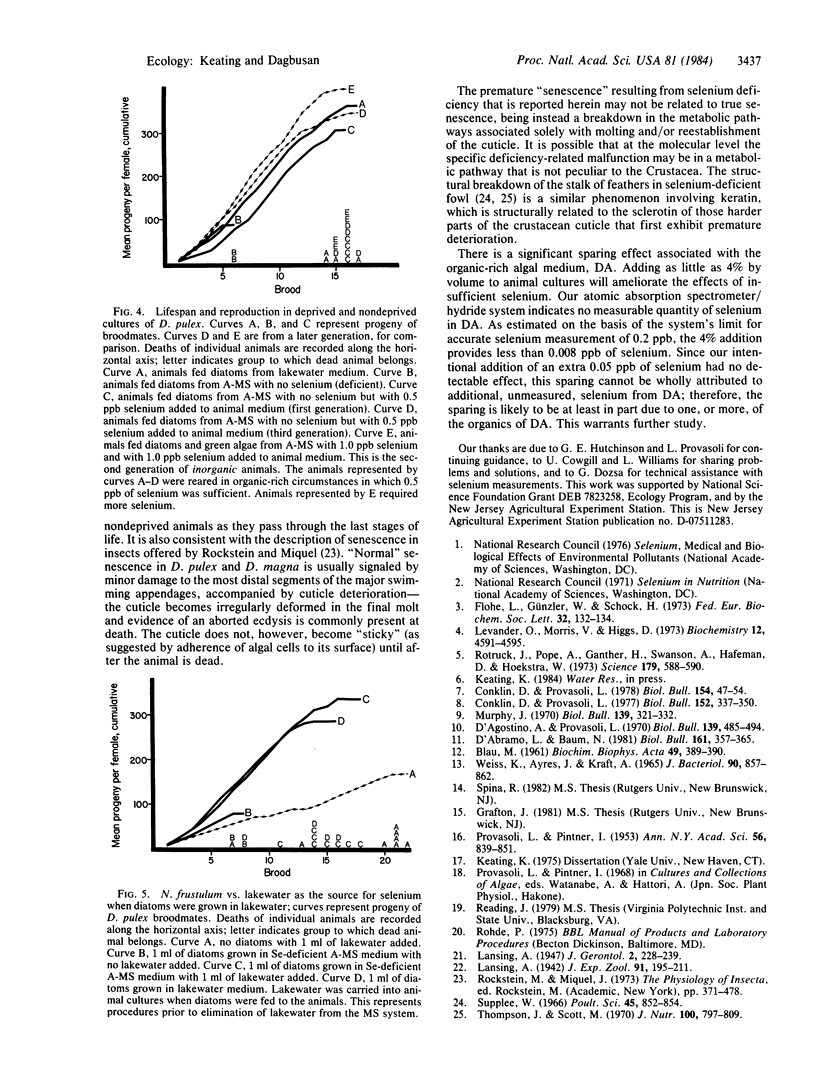
Images in this article
Selected References
These references are in PubMed. This may not be the complete list of references from this article.
- D'Agostino A. S., Provasoli L. Dixenic culture of Daphnia magna, Straus. Biol Bull. 1970 Dec;139(3):485–494. doi: 10.2307/1540367. [DOI] [PubMed] [Google Scholar]
- Flohe L., Günzler W. A., Schock H. H. Glutathione peroxidase: a selenoenzyme. FEBS Lett. 1973 May 15;32(1):132–134. doi: 10.1016/0014-5793(73)80755-0. [DOI] [PubMed] [Google Scholar]
- Levander O. A., Morris V. C., Higgs D. J. Selenium as a catalyst for the reduction of cytochrome c by glutathione. Biochemistry. 1973 Nov 6;12(23):4591–4595. doi: 10.1021/bi00747a008. [DOI] [PubMed] [Google Scholar]
- PROVASOLI L., PINTNER I. J. Ecological implications of in vitro nutritional requirements of algal flagellates. Ann N Y Acad Sci. 1953 Oct 14;56(5):839–851. doi: 10.1111/j.1749-6632.1953.tb30262.x. [DOI] [PubMed] [Google Scholar]
- Rotruck J. T., Pope A. L., Ganther H. E., Swanson A. B., Hafeman D. G., Hoekstra W. G. Selenium: biochemical role as a component of glutathione peroxidase. Science. 1973 Feb 9;179(4073):588–590. doi: 10.1126/science.179.4073.588. [DOI] [PubMed] [Google Scholar]
- Supplee W. C. Feather abnormality in poults fed a diet deficient in vitamin E and selenium. Poult Sci. 1966 Jul;45(4):852–854. doi: 10.3382/ps.0450852. [DOI] [PubMed] [Google Scholar]
- Thompson J. N., Scott M. L. Impaired lipid and vitamin E absorption related to atrophy of the pancreas in selenium-deficient chicks. J Nutr. 1970 Jul;100(7):797–809. doi: 10.1093/jn/100.7.797. [DOI] [PubMed] [Google Scholar]
- Weiss K. F., Ayres J. C., Kraft A. A. Inhibitory action of selenite on Escherichia coli, Proteus vulgaris, and Salmonella thompson. J Bacteriol. 1965 Oct;90(4):857–862. doi: 10.1128/jb.90.4.857-862.1965. [DOI] [PMC free article] [PubMed] [Google Scholar]







